- Mercedes-Benz is adding an electric GLC SUV to its lineup.
- The GLC EV uses 800-volt fast-charging architecture.
- The production version will debut in September.
2027 Mercedes-Benz GLC EV Prototype First Drive: Worth Waiting For
Mercedes' new EV platform is already delivering
The GLC SUV is one of Mercedes-Benz's best-selling cars. As such, you can be sure that Benz's product planners won't be messing with the formula lightly. It's a right-sized SUV at a (relatively) affordable price, providing the perfect entry to the brand for many buyers.
Mercedes recently introduced the GLC plug-in hybrid to the lineup, but as the brand pushes toward electrification, a PHEV simply won't be enough. A fully electric GLC is coming, and after a go behind the wheel of a preproduction prototype, covering some challenging terrain, I'm confident this new GLC will reach even greater heights.
EQ inside
The current GLC is still pretty fresh, so the EV won't be an immediate replacement. It's more of a younger high-voltage sibling, much like how the G 580 with EQ Technology can be found sitting in the dealership lobby right next to the AMG G 63.
Unfortunately, like the larger G, this EV will officially be called the GLC with EQ Technology. And also like with the bigger G, the electric GLC will be the one you want.
The GLC EV shares more than a few technology concepts with the upcoming electric CLA. That includes a new battery chemistry featuring silicon oxide in the graphite anodes plus a reduced reliance on cobalt, one of the more costly (financially and environmentally) components of modern lithium-ion batteries. All of this is packaged in new 800-volt vehicle architecture, supporting charging power of up to 320 kW.
Kraftwerke
Power comes from a pair of electric motors — one on each axle — delivering 4Matic all-wheel drive. Since both motors rely on permanently excited magnets, the front one is augmented with a mechanical disconnect that removes its drag from the equation when not needed for either acceleration or regenerative braking. It's the same basic concept as what's used in the EQE SUV.
Speaking of regen, the GLC is happy to coast when you lift off the accelerator, but it also has two levels of regenerative braking plus an auto-regen mode like Mercedes' current cars, and it will bring itself to a complete stop. That means one-pedal driving is on the but even in its maximum setting, the GLC's regen is smoother and more relaxed than many other EVs, meaning you'll still need that brake pedal.
That pedal is all-new too, believe it or not. Mercedes developed a new braking system that unifies regen and physical braking in a more cohesive way. It's basically like a brake-by-wire system in that the pedal's travel doesn't directly control the amount of brake application. From behind the wheel, you're just stepping on a spring-loaded thing that replicates the feel of a traditional pedal.
Mercedes engineers were quick to point out that it's not true brake-by-wire, as there is still a physical linkage in there, but in normal operation, it's the car that decides how much stopping force to apply from either the electric motors or the brake pads based on how far you're pushing down the pedal.
How does it feel? Different. The pedal is firm and has a consistent feel, lacking the gradations of resistance felt when moving through the travel on a typical pedal. It does feel a little synthetic, and the lack of feedback while engaging the antilock braking system took me a bit of getting used to. But the good news is that it eliminates the occasionally awkward transition between regenerative and physical braking. It's a definite step forward.
Maximizing grip
I tested the GLC EV prototype on a snowy, icy route in Northern Sweden, a loop that took me up the side of a mountain and back down again on a surface slippery enough that I'd have wanted poles and snowshoes were I to traverse it on foot. The GLC had neither, but it was shod with Pirelli Scorpion Winter 2 snow tires, without which I'd not have gotten far. It was the stability and traction control systems, though, that really worked the magic. Foot flat to the floor, I could feel the car modulating the application of power, adding and subtracting smoothly and dynamically based on the level of grip.
The GLC flew up icy inclines and tracked straight and clean on uneven surfaces. They were rough surfaces, too, and the GLC's optional air suspension absorbed the worst with minimal complaint. Dialing over to Terrain mode raised the GLC by an inch, which proved helpful.
On the road, the GLC was equally smooth and decidedly hushed despite those snow tires and the preproduction nature of the thing. Yes, my ears picked up a few creaks and rattles here and there, as you'd expect from a car screwed together by hand, but the fundamentals were solid.
Questions remain
I was left genuinely impressed, but there are still plenty of questions to answer. Mercedes-Benz hasn't given any indication of the anticipated range, but the remixed batteries and motors should mean a nice boost over the EQE SUV's 302 miles. Likewise, the electric GLC should come at a lower price than the EQE SUV's $80K, but no word there either.
I also can't say for sure what this GLC looks like, as the stippled camouflage was annoyingly effective. However, the creases on the fenders look more aggressive than those on the current GLC, while the three-pointed star headlights poking out from beneath the vinyl make me think this will share more than a few cues with the Concept CLA.
The GLC with EQ Technology will make its formal debut at this year's IAA Mobility show in Munich in September. And while it's too early to draw any formal conclusions based on this prototype drive, I think the electric GLC will be worth the wait.

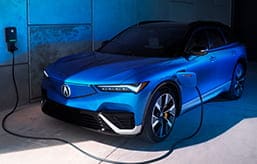
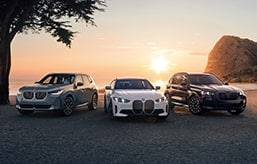
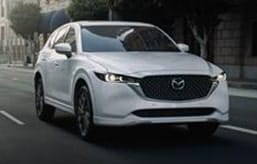
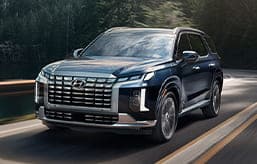


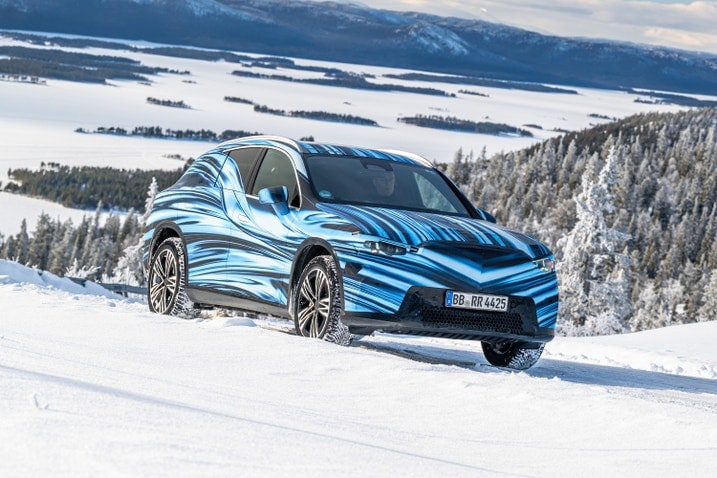


 by
by  edited by
edited by